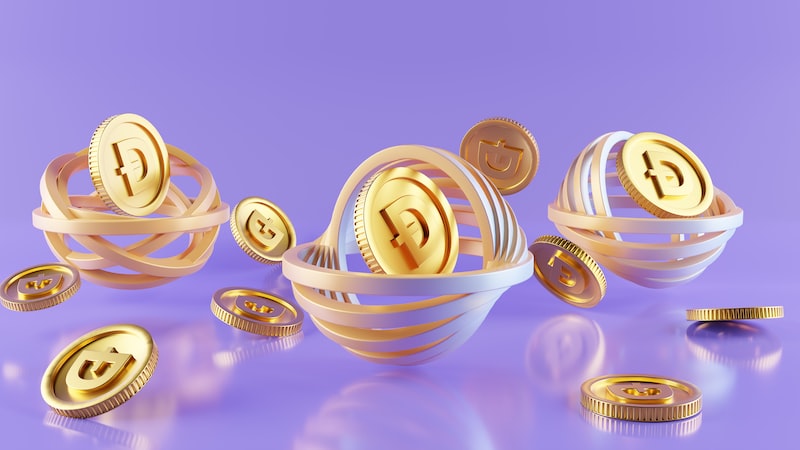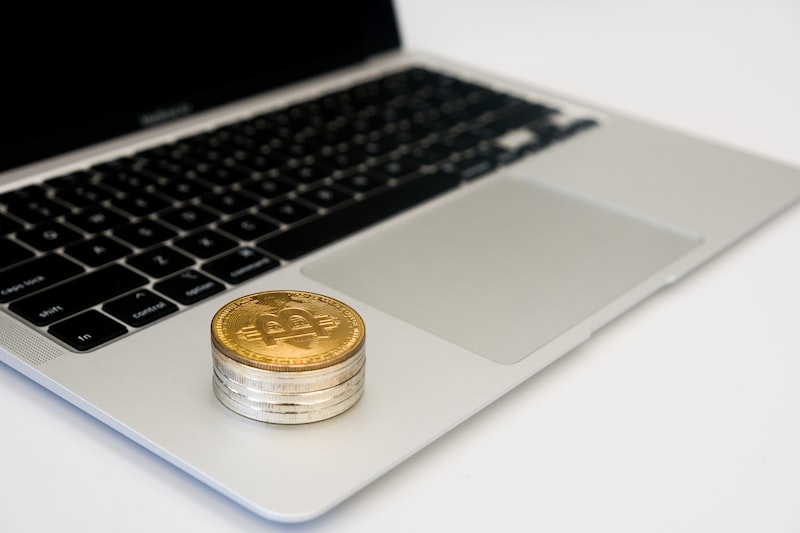Table of Contents
Have you ever wondered about the costs behind minting Non-Fungible Tokens (NFTs)? In this article, we’ll take a closer look at the financial aspects of NFT minting and uncover the key factors that contribute to the overall expenses.
When it comes to NFTs, minting refers to the process of creating a unique digital asset on a blockchain platform. It’s similar to printing a limited-edition artwork or producing a collectible item, except it’s done in the digital realm. But how much does it actually cost to mint an NFT?
The cost of minting an NFT depends on several factors. One significant factor is the blockchain network on which the NFT is being created. Ethereum, for example, is one of the most popular choices for NFT minting. However, due to its high demand and network congestion, the transaction fees, also known as gas fees, can be quite steep. As a result, minting an NFT on Ethereum may incur substantial costs.

Another element to consider is the complexity of the NFT itself. If the artwork or digital asset being minted is highly detailed or includes interactive features, the associated costs may be higher. This is because more computational power and resources are required to store and process the additional data.
Additionally, the choice of NFT marketplace can impact the overall expenses. Different platforms have varying fee structures and royalty systems. Some marketplaces charge a percentage fee on each sale or transaction, while others may require an upfront listing fee. It’s crucial to research and compare different platforms to find the best fit for your needs and budget.
Furthermore, the timing of the minting process can influence costs as well. During periods of high demand or when a popular artist releases a new collection, gas fees tend to rise due to increased competition. Planning the minting process strategically can help minimize costs and maximize potential returns.
minting NFTs involves various financial considerations. Factors such as the chosen blockchain network, complexity of the asset, marketplace fees, and timing all play a role in determining the overall costs. By understanding these components, creators and collectors can make informed decisions and navigate the NFT landscape more effectively.
Remember, each step of the NFT minting process brings its own set of expenses. So, it’s essential to conduct thorough research and weigh the costs against the potential benefits before diving into the
world of NFT creation.From Pennies to Millions: Unraveling the Financial Landscape of NFT Minting Costs
Have you ever wondered about the financial journey behind creating and owning a non-fungible token (NFT)? In this article, we will dive into the intriguing world of NFT minting costs. Strap on your seatbelt as we explore how these digital treasures can go from mere pennies to fetching millions.
When it comes to NFTs, the process starts with minting, which is akin to the creation of a unique masterpiece. It’s like turning an ordinary rock into a dazzling diamond. But how much does it cost?

Initially, NFT minting costs were relatively low, often amounting to just a few dollars. However, as the popularity of NFTs skyrocketed, so did the associated expenses. The fees involved in minting an NFT can vary significantly depending on the platform used and the blockchain network it operates on.
For instance, Ethereum, one of the most prominent blockchain networks for NFTs, employs a concept called “gas fees.” Gas fees are essentially transaction fees paid by users to execute operations on the network. These fees cover the computational resources required to validate and secure the transactions. Unfortunately, the surge in demand for NFTs has led to congestion on the Ethereum network, resulting in exorbitant gas fees that can reach astronomical heights.
To put things into perspective, minting an NFT on Ethereum could sometimes cost hundreds or even thousands of dollars during peak periods. This significant expense has sparked debates about the accessibility and sustainability of NFTs, as it restricts smaller creators and enthusiasts who may not have substantial financial resources at their disposal.
However, the advent of alternative blockchain networks has brought hope for those seeking more affordable options. Networks like Binance Smart Chain and Flow offer lower transaction fees compared to Ethereum, making them appealing alternatives for minting NFTs without breaking the bank.
the financial landscape of NFT minting costs has witnessed an astonishing transformation. From humble beginnings where pennies could create digital wonders, it has evolved into a realm where millions are spent to secure unique tokens. The rise in popularity has introduced challenges in terms of accessibility and affordability, but with the emergence of alternative blockchain networks, opportunities for more cost-effective minting experiences are now within reach.
So, the next time you marvel at the value of an NFT, remember the journey it undertook from its inception, from the meager costs of creation to the dizzying heights of millions.
Breaking Down the Price Tag: Understanding the Economics Behind NFT Creation
Have you ever wondered what goes into the creation of non-fungible tokens (NFTs)? The price tag attached to these unique digital assets can sometimes leave people scratching their heads. In this article, we’ll delve into the economics behind NFT creation, demystifying the factors that contribute to their value.
First and foremost, one must understand that NFTs are built on blockchain technology, which ensures their authenticity and immutability. When an artist or creator decides to tokenize their work as an NFT, they go through a process known as minting. Minting involves creating a digital certificate of ownership that is stored on the blockchain.
The cost of minting an NFT can vary depending on several factors. One crucial aspect is the platform used for minting. Different platforms charge different fees, and these fees can range from a few dollars to several hundred dollars per transaction. Additionally, there may be gas fees associated with minting, which are required to pay for the computational resources needed to add the NFT to the blockchain.

Another factor that influences the price of NFT creation is the complexity of the artwork or digital asset being tokenized. Intricate and highly detailed pieces may require more time and effort from the artist, resulting in higher costs. Additionally, if the artwork includes licensed or copyrighted material, legal fees may be incurred to ensure compliance with intellectual property laws.

Furthermore, the reputation and popularity of the artist or creator can impact the price of NFT creation. Established artists with a strong following may command higher prices for their NFTs due to demand and perceived value. On the other hand, emerging artists might offer more affordable options as they seek to build their reputation and gain exposure.
Lastly, market dynamics play a significant role in determining the economics behind NFT creation. Supply and demand factors heavily influence the price of NFTs. If a particular artist’s work becomes highly sought after, it can drive up the prices of their NFTs. Likewise, if there is a surge in interest for a specific type of digital asset, creators may capitalize on the trend by increasing their prices.
Understanding the economics behind NFT creation gives us insights into why these digital assets can sometimes come with hefty price tags. Factors such as platform fees, artwork complexity, artist reputation, and market dynamics all contribute to the value placed on NFTs. So the next time you come across an NFT with a seemingly high price, remember that it represents more than just a digital file—it embodies a unique piece of art or collectible with its own fascinating economic backstory.
NFT Minting: Exploring the Hidden Expenses That Determine the Value of Digital Art
Have you ever wondered how digital artists and creators determine the value of their artwork in the world of NFTs? The process of minting non-fungible tokens, or NFTs, comes with its fair share of hidden expenses that play a vital role in establishing the worth of digital art. In this article, we will delve into these hidden costs and shed light on their impact on the overall value of NFTs.
When an artist decides to mint their artwork as an NFT, they typically choose a blockchain platform to host their creation. However, this decision is not without financial implications. Most blockchain platforms require artists to pay a gas fee, which covers the cost of processing the transaction on the network. Gas fees can vary widely depending on the platform and network congestion, making it important for artists to consider this expense before minting their NFTs.
Another crucial aspect is storage. Storing digital art securely is imperative to ensure its longevity and accessibility. Many artists opt for decentralized storage solutions, such as IPFS (InterPlanetary File System), which distribute the artwork across multiple nodes, making it resistant to censorship and data loss. However, utilizing decentralized storage often incurs additional costs, which artists must account for when determining the value of their NFTs.
Additionally, intellectual property rights and licensing agreements are essential considerations in the world of digital art. Artists need to protect their creations from unauthorized use or infringement, and this often requires legal assistance. Engaging lawyers or platforms specializing in copyright protection adds another layer of expense that contributes to the overall value of the NFT.
Insurance is another factor that artists may need to consider. As the value of some NFTs can reach astronomical figures, insuring these digital assets becomes crucial. Insurance policies designed specifically for NFTs are emerging to provide coverage against theft, loss, or damage. However, obtaining such insurance can involve significant costs that artists need to factor into their pricing strategy.
the process of minting NFTs involves several hidden expenses that contribute to the determination of a digital artwork’s value. Gas fees, storage solutions, legal protection, and insurance are all important factors to consider when pricing NFTs. By taking these expenses into account, artists and collectors alike can gain a better understanding of the true worth of digital art in the exciting world of NFTs.
The Price of Authenticity: Delving Into the Costs Associated with NFT Creation
Have you ever wondered about the true cost behind creating an NFT? Non-Fungible Tokens, or NFTs, have taken the world by storm, revolutionizing the way we perceive and trade digital assets. But what lies beneath the surface of this intriguing concept? Let’s dive into the details and uncover the expenses involved in bringing an authentic NFT to life.
Creating an NFT is not as simple as clicking a button and voila! It requires careful consideration, technical expertise, and financial investment. One of the primary costs associated with NFT creation is gas fees. Gas fees are transaction costs on the blockchain, specifically on Ethereum, where most NFTs reside. These fees cover computational resources required to process and validate transactions. Depending on network congestion, gas fees can vary greatly and have been known to reach astronomical levels during peak periods.
Another significant expense arises from the artwork itself. Whether it’s a digital painting, a unique piece of music, or a virtual collectible, artists put their heart and soul into their creations. However, there are costs involved in producing high-quality content that captivates audiences. Professional software, hardware, and even hiring a team of skilled artists all contribute to the price tag attached to creating an NFT masterpiece.
In addition to production costs, artists also need to consider the platform fees. NFT marketplaces provide a platform for creators to showcase and sell their work. These platforms typically charge a percentage fee for every sale made. While this fee varies across different platforms, it’s essential for artists to factor it into their pricing strategy to ensure they cover their expenses and make a profit.
Lastly, the authenticity and uniqueness of an NFT play a crucial role in its value. To establish provenance and verify the originality of an NFT, creators often invest in blockchain-based certificates of authenticity. These certificates provide buyers with confidence that they are purchasing a genuine, one-of-a-kind creation. However, obtaining these certificates can come at an additional cost, further contributing to the overall price of authenticity.
while NFTs offer exciting opportunities for creators and collectors alike, the road to authenticity comes with its fair share of expenses. From gas fees and production costs to platform fees and certificates of authenticity, the process of creating an NFT involves financial investments at every step. Understanding these costs can help both artists and enthusiasts navigate the world of NFTs more effectively and make informed decisions in this ever-evolving digital landscape.





